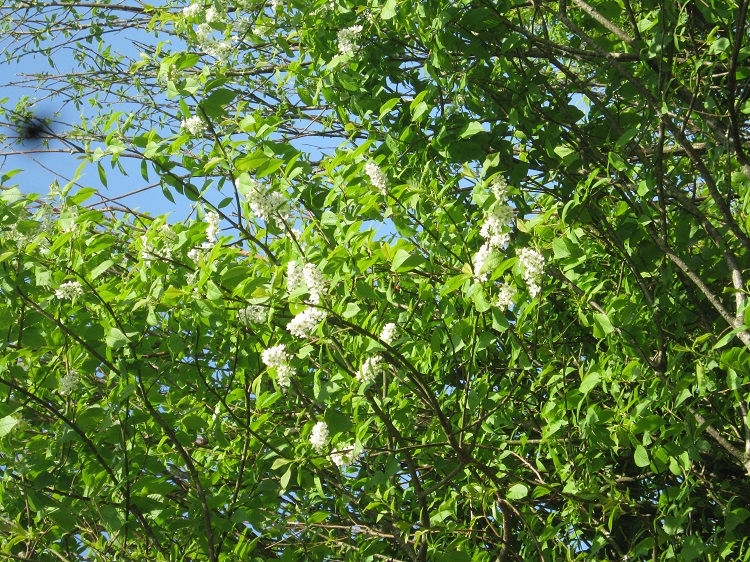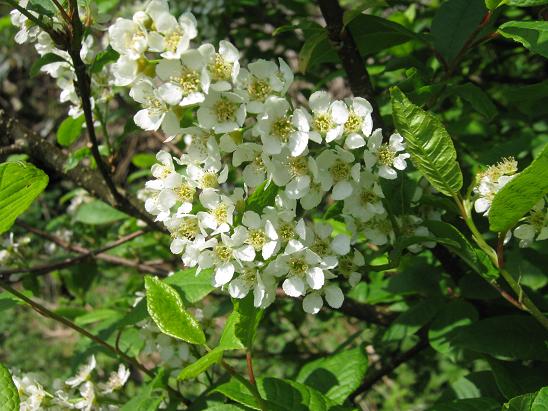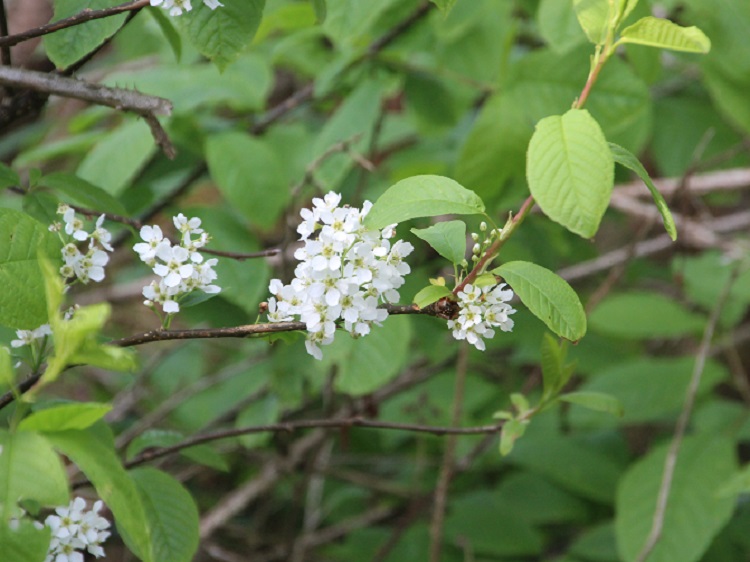 |
 |
 |
| 10th April 2011 | 17th April 2011 | 28th April 2022 |
|
A small twiggy tree from northern Europe. I planted a couple of groups of them as windbreaks
when I moved into this garden and they have remained as they were ever since, flowering well
above my head on long branches that are swept sideways by the prevailing wind. Time and familiarity had started to obscure the fact that they were becoming gloomy and oppressive. As the branches elongated they were drooping lower and lower over the path and becoming an obstacle. The only solution was to cut them all back to stumps and allow them to start again. Now I have a bit more light, the north of the garden has opened up and I have a chance to think what it is I really want on the perimeter. One or two of these will be retained, but I don't need a dozen. Trees and Shrubs Online says: "The bird cherry is widely spread over the northern part of the Old World, extending in one or other of its forms from the British Isles to Japan. It is a very hardy tree, and not particular as to soil. Whilst the typical form may give place in gardens to such varieties as ‘Plena’ and ‘Watereri’, it is itself very charming when planted in thin woodland. The named varieties are best propagated by budding on seedlings of the type in July. The tree has little economic value, although the timber, when available, is valued by cabinet-makers, and the fruit (according to Loudon) has been used to flavour brandy and home-made wines. It flowers in May." |
||